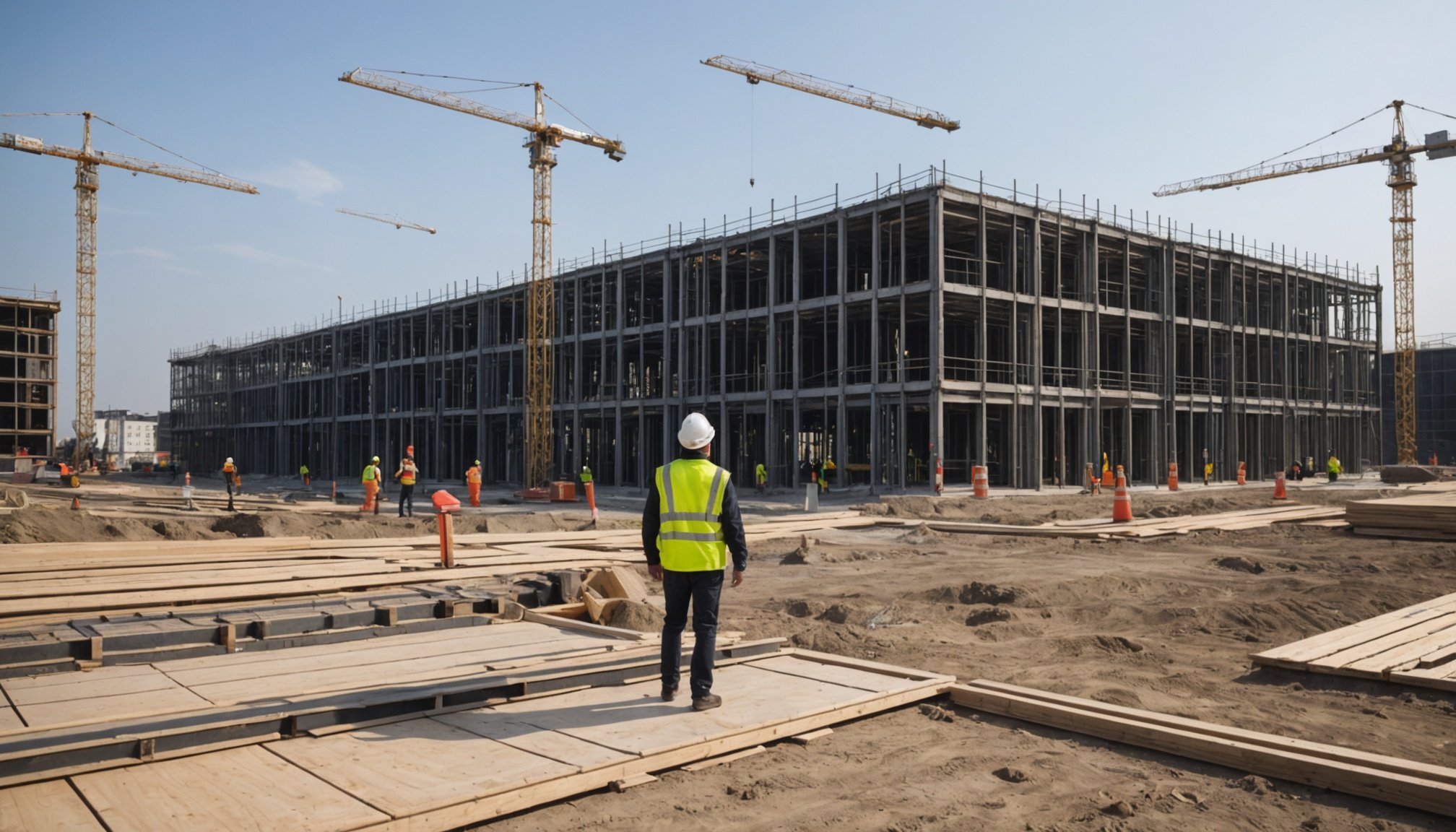Comprehensive Overview of the 2015 Construction (Design and Management) Regulations
The 2015 CDM Regulations were introduced to improve UK construction law by enhancing health and safety standards. These regulations were rooted in the historical evolution of safety measures in construction, where past incidents showed a dire need for structured management practices. The primary aim is to reduce accidents and health issues within construction projects, safeguarding all involved.
Key stakeholders required for compliance include:
Have you seen this : Essential Legal Insights for UK Businesses Providing Telehealth Services
- Clients: Responsible for ensuring that their projects comply with the regulations and appointing competent professionals.
- Designers: Expected to eliminate, reduce, or control foreseeable risks during the design stage.
- Principal Designers and Contractors: Oversee health and safety during the project and communicate effectively with all parties involved, ensuring compliance throughout the project’s life cycle.
Businesses in the construction sector must embrace these legal responsibilities to foster safer work environments. By adhering to these rules, companies not only comply with UK construction law but also demonstrate a commitment to the welfare of their workforce. Emphasizing clear communication among stakeholders, thorough documentation, and ongoing training is vital to achieving compliance and promoting safety.
Understanding Legal Responsibilities Under the CDM Regulations
A comprehensive understanding of legal responsibilities under the CDM Regulations is crucial for achieving construction compliance. Clients are responsible for appointing competent professionals and ensuring that projects align with these regulations. Their role extends to overseeing that health and safety considerations are integrated from the project’s inception.
This might interest you : Mastering the Equality Act 2010: Essential Legal Duties Every UK Business Needs to Understand
Designers, pivotal within this framework, must eliminate or control risks at the design stage, ensuring that safety aspects are ingrained before construction begins. This proactive approach curtails potential hazards, aligning projects with compliance standards.
The role of principal contractors involves organizing health and safety on-site. They carry the duty of crafting detailed health and safety plans that mitigate risks throughout the project’s lifecycle. Regular communication with clients and designers ensures a unified safety approach.
Workers also bear responsibilities to adhere to safety protocols. Their participation in safety programs and commitment to maintaining a safe workplace is paramount.
The importance of establishing robust health and safety plans cannot be overstated. These plans provide a blueprint for managing risks and are essential for compliance. Strict adherence to these protocols reflects a committed stance towards safeguarding well-being across construction sites.
Strategies for Compliance with CDM Regulations
Adhering to the 2015 CDM Regulations requires businesses to employ robust compliance strategies. Implementing a compliance checklist is a fundamental strategy, serving as a roadmap to ensure adherence to legal standards. This checklist should encompass every phase of construction, verifying that all actions align with regulatory standards.
Developing a Compliance Checklist
A detailed checklist addresses essential aspects, such as risk assessments and communication protocols. Including specific tasks for principal contractors and ensuring timely execution guarantees that all regulations are met efficiently.
Training and Education for Staff
Investing in training and education is crucial for embedding compliance into company culture. Continuous learning keeps all staff informed about the latest industry updates and safety practices, fostering a well-informed workforce dedicated to maintaining safety standards.
Regular Compliance Audits
Implementing regular audits helps identify areas for improvement. These audits assess operational practices against set standards and involve establishing key performance indicators to measure success. Engaging external expertise for these audits ensures objectivity, enhancing the credibility of audit outcomes.
Focusing on these components fortifies the compliance framework, making it responsive to changes and promoting sustained adherence to UK construction law.
Best Practices in Risk Management in Construction
Effective risk management is essential for ensuring safety within the construction sector. Identifying and assessing potential risks in projects is the first step, requiring a thorough analysis of every phase of the process to determine possible hazards. By proactively pinpointing these risks, construction firms can mitigate them before they escalate into accidents or non-compliance issues.
Implementing robust health and safety management systems is another critical component. These systems should be systematic and continuously reviewed to adapt to new challenges and regulatory updates. Such systems facilitate a structured approach to managing health and safety, ensuring that all procedures are up-to-date and effective in both preventing accidents and improving overall safety standards.
Successful strategies can be found in various case studies, highlighting the effectiveness of comprehensive risk management practices. For example, projects that incorporate advanced technological solutions, like predictive analytics and real-time monitoring, often demonstrate fewer incidents and higher compliance rates. Emphasizing the inclusion of such strategies promotes a proactive stance toward safety, showcasing the importance of staying ahead of potential issues before they arise. By adopting best practices, construction businesses can foster a culture of safety, compliance, and operational efficiency.
Navigating Legal Challenges in the Construction Sector
In the construction industry, legal challenges can arise frequently, impacting project outcomes and business operations. Common issues include contract disputes, regulatory compliance failures, and liability claims. Addressing these requires a deep understanding of UK construction law and proactive measures to limit legal exposure.
Effective communication and documentation are essential in navigating these challenges. By maintaining comprehensive records and ensuring clear communication among all parties, construction firms can protect themselves against potential legal disputes. Proper documentation provides evidence of compliance and contractual obligations, which can be pivotal during legal proceedings.
Dispute resolution strategies play a critical role in managing conflicts that arise during construction projects. Techniques such as negotiation, mediation, and arbitration offer pathways to resolve disputes without resorting to costly litigation. Legal representation is vital, ensuring that a business’s interests are effectively defended and negotiated.
Adopting a proactive approach to legal challenges not only safeguards a business but also enhances trust and reliability with clients and stakeholders. Emphasising structured legal strategies, monitoring evolving regulations, and promoting a culture of transparency can significantly bolster a construction firm’s ability to manage legal intricacies.
Case Studies of Successful Compliance
Studying case studies offers invaluable insight into best practices and successful compliance within the construction industry. Reflecting on these examples helps comprehend the tangible impact of compliance strategies and learn from industry leaders.
Case Study 1: Implementation of a Safety Management System
In this case, a leading construction firm integrated a robust safety management system. By prioritising safety, they reduced on-site accidents by 30%. This proactive approach not only enhanced safety but also increased project efficiency and safeguarded their workforce.
Case Study 2: Effective Risk Assessment Protocols
Another noteworthy example involves a company refining risk assessment protocols. They developed a sophisticated method for identifying potential risks early, implementing preventive measures. This led to improved compliance with safety standards and minimised disruptions during projects.
Case Study 3: Handling Non-compliance with Regulations
A third case study highlights a firm’s approach to handling non-compliance issues. They introduced corrective measures and an informative training program. These actions fostered a culture of safety and prevented future violations, ultimately strengthening their reputation.
These case studies illustrate the profound impact of compliance on business success and reputation. By emulating these strategies, companies can embed a safety-focused ethos across their operations.











